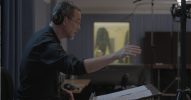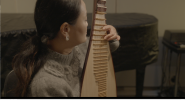Hey all!
I’m Mattias Wennlund and I’m the audio director for Europa Universalis V, formerly known as Project Caesar. I’d like to give some insight on what has been, and is, the music direction and implementation system in EU5.
Comparatively speaking, I’m new to Paradox and the Tinto dev team. I came on the project in early 2023, when the process of music production had already been rolling for quite some time.
The original premise of the music direction, at the time the writing process started (so well before my time), was to compose music encompassing all historical eras the game takes place in, as well as all religious and folk music traditions present during those years. A behemoth of a task, as you can imagine. That thread was something I tried to spin further, to see how we could achieve that goal within a foreseeable time, but also how to more clearly anchor it in the rich heritage of previous generations of Paradox games all while taking a step forward in terms of what we can provide for our players. After many discussions both within the Paradox Audio department, with our composer for EU5 Håkan Glänte, as well as with the Tinto leads, a few patterns emerged. We wanted EU5 to have:
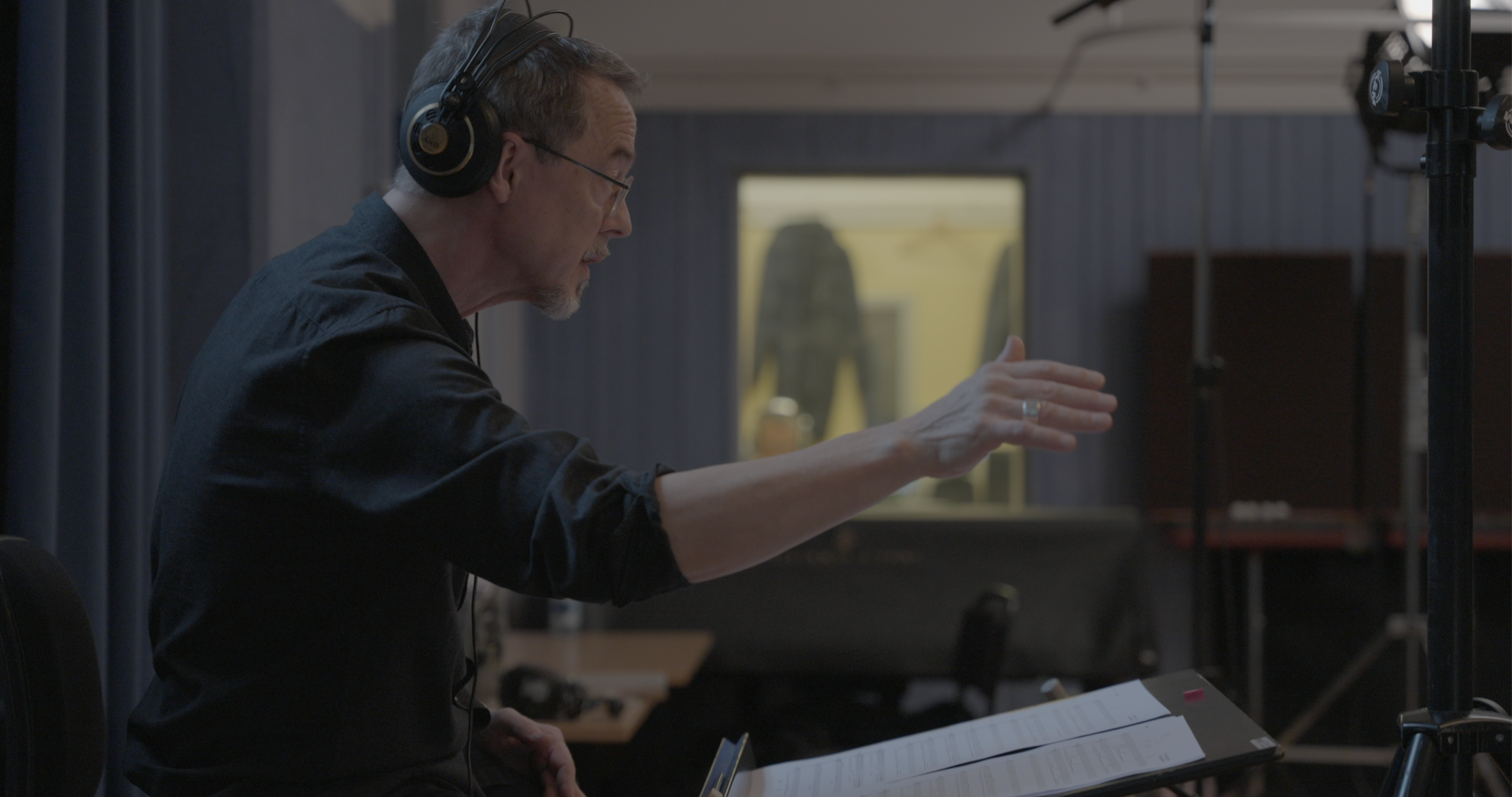
Looking back at previous EU games, it seems immediately obvious that a low-hanging fruit in terms of direction for a new composer would be “If in doubt, go epic”. It’s also clear that the last titles have been veering towards a more orchestral and cinematic score referencing a classical or baroque/renaissance style of composition. But if we go back even further, to EU2, we also have examples of what is commonly called “public domain” music, meaning authentic music written a long time ago, or oral traditions of folk music carried across generations by being learned from musician to musician.
How then do we incorporate all of that heritage, and new direction, into the soundtrack for EU5?
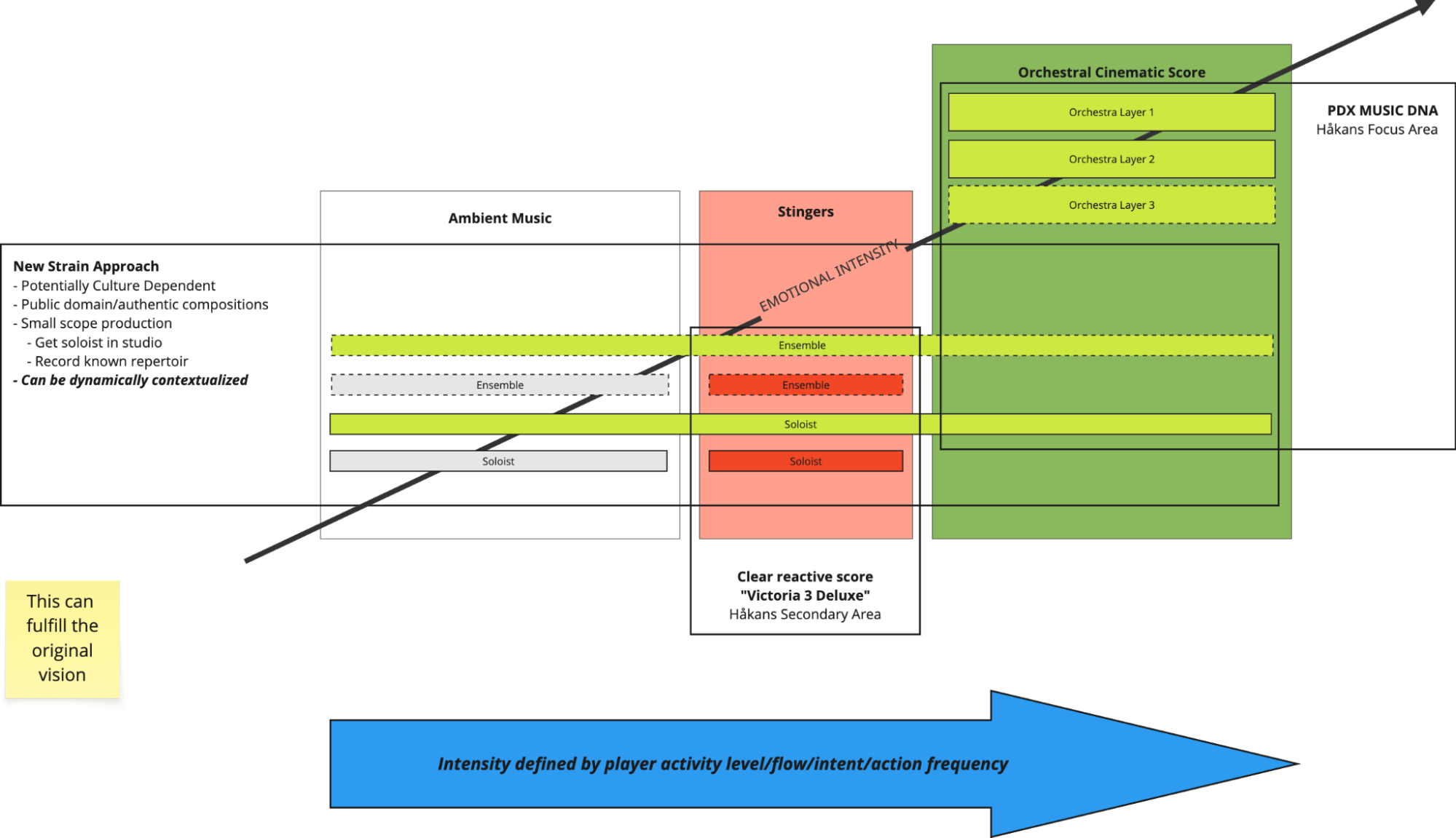
As a quick test we broke up some of the compositions in stems, each one representing a group of instruments or a solo instrument, and started experimenting with scaling the composition up or down based on a single parameter (using our audio middle-ware Wwise and its built-in dynamic music tools). Was it possible to create a dynamic arrangement without sacrificing the core composition style and arc of Håkan’s work and traditional techniques? The experiment proved successful, and we decided to keep working in that direction, continuously updating the dynamic arrangements as bare-bones demos turned into digital symphony orchestras that then eventually turned into real-life recordings of instruments.
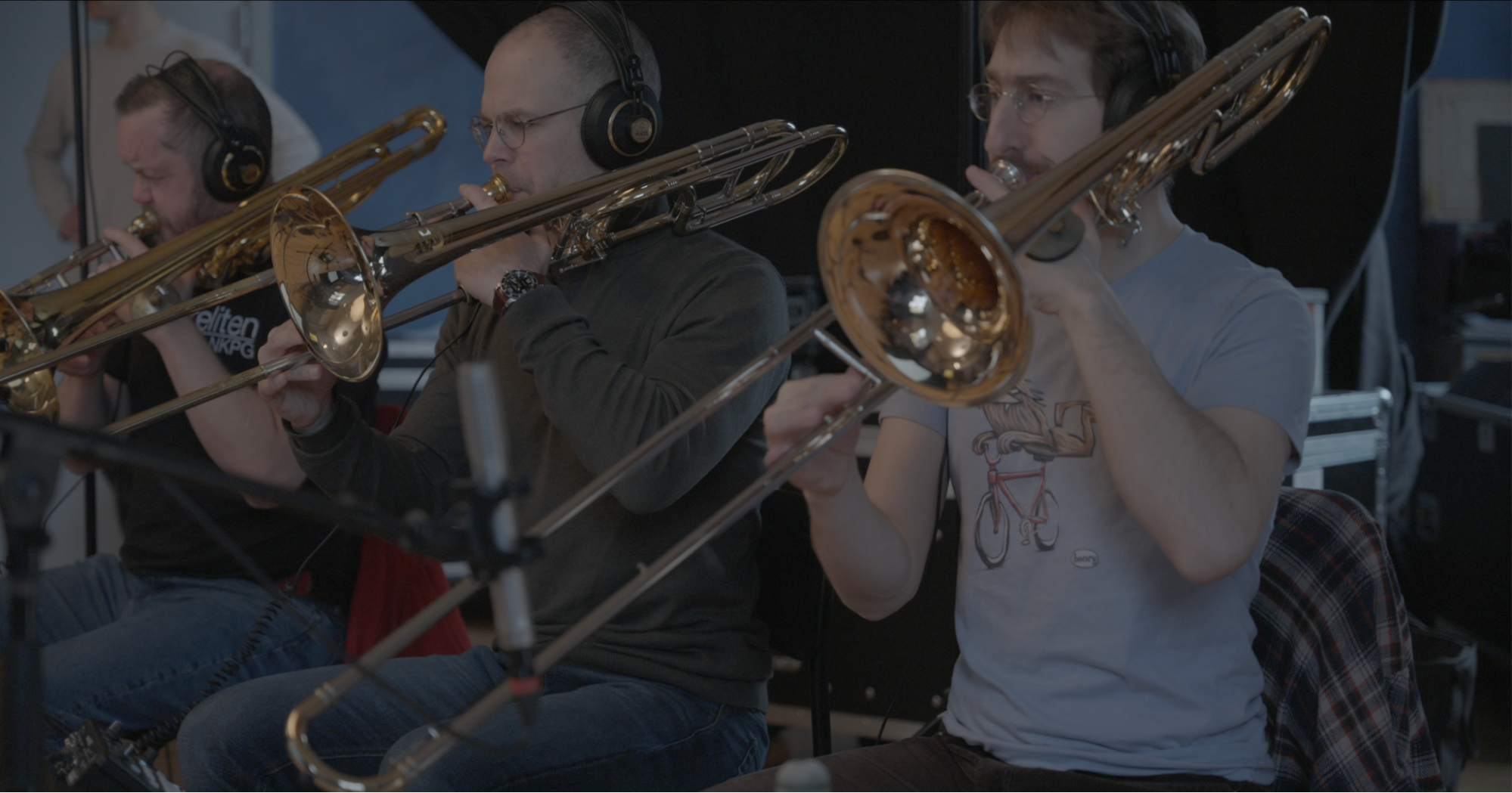
Sometimes this was easy- for instance, having a drum come in on the next bar very often works seamlessly. But sometimes it was harder, for instance when dealing with a pronounced vocal soloist track in a slower or more free form tempo. It was important to us not to use the same rules for every stem, to avoid music “kicking in,” but rather ebbing and flowing as if a conductor is directing the musicians in real time.
The next question was what to base that single parameter driving the music intensity on. Our players enjoy our games for very different reasons, and their play sessions can look very different. In a GSG, one player might be spending their time adjusting tax percentages, one will be exploring the world, and another might be directing their armies in war. We realized we needed a single way of encapsulating all of those varied forms of “enacted intent” to make the score react in meaningful ways to each player's specific play style.
We categorized different actions according to their weight or importance, scaling all the way from clicking any single button regardless of its function to declaring a war, and gave them a value on a scale. For each of those actions, we fill up a meter in Wwise that then slowly trickles back down if the player is inactive. This way, any “high intent period of play” will generate an increase on that meter, even if it’s only about intensely looking through the UI for your next move. It also gave us big flexibility in how fast we allow that meter to go up or down, meaning we can balance the ebb and flow of the music in a single place. In addition, we separated the written score into one group of tracks more suitable for peace time, and one group of tracks more suitable for war time.
Another important factor for us was to allow the soundtrack, and each play session, to breathe in terms of sequencing of music. We’ve set up tracks to have a random, but not insignificant, period of silence between them (with some systemic exceptions), both to avoid listener fatigue, but also to let the ambient sounds of the game world come into focus.
A very conscious effort was made to stay true to the rich musical heritage of previous EU games by letting the musical themes be influenced by older soundtracks and fan favourites. Sometimes as inspiration, sometimes as clear references, and sometimes as a direct interpretation of materials from many different sources in earlier soundtracks. There is something distinctly “Europa Universalis” to be treasured and captured, and that aspect needs to be there for the soundtrack to feel right. This very literal approach served very well as a springboard for Håkan's writing process into his own new territory, and as an anchor to help us stay true to the tone of previous games.
It dawned on us that there was a synergy to be had here, with both getting help from people much more knowledgeable than us within their tradition, and also sourcing actual, authentic pieces of music performed in a style that was present in that place and time. We couldn’t think of a way to have a more authentic representation of any art represented in our games than that, to have the music sound as it would sound to a person at that place and time in history.
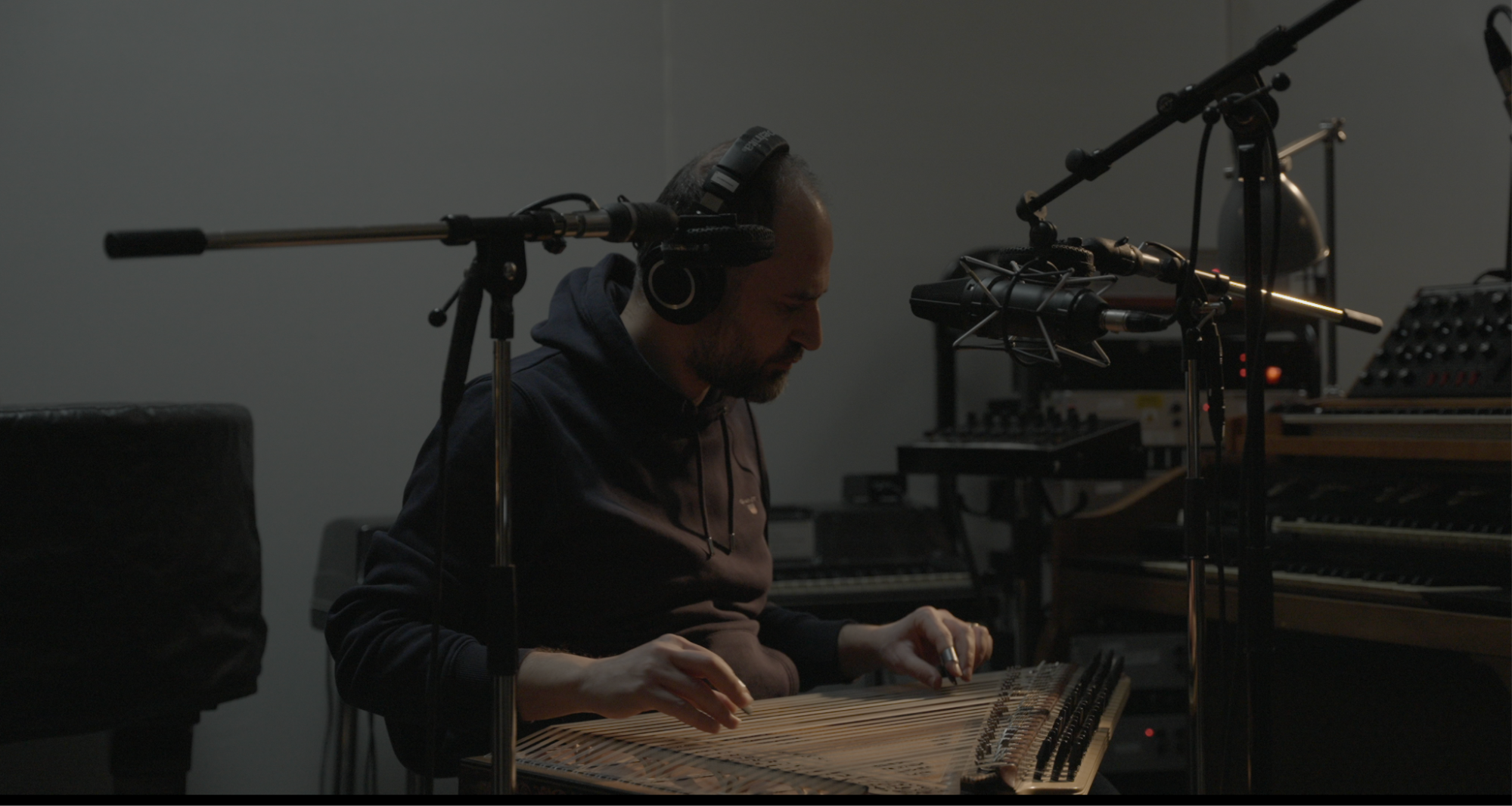
We reached out to partners we knew would be able to expand on our own contacts, specifically into regions of the world where we for geographical reasons have less knowledge and acquaintances. We wanted to find, where possible, performers currently active within a certain culture's musical tradition and performance. Secondly, when not possible because of lack of written records or long-gone civilizations, performers who could present the most plausible representation of what historical evidence suggests could be what that music sounded like. It goes without saying that we also looked for performers and musicians masterful in their respective crafts. Additionally, where applicable, our contacts consulted ethnomusicologists and musical historians to validate our processes and source material.
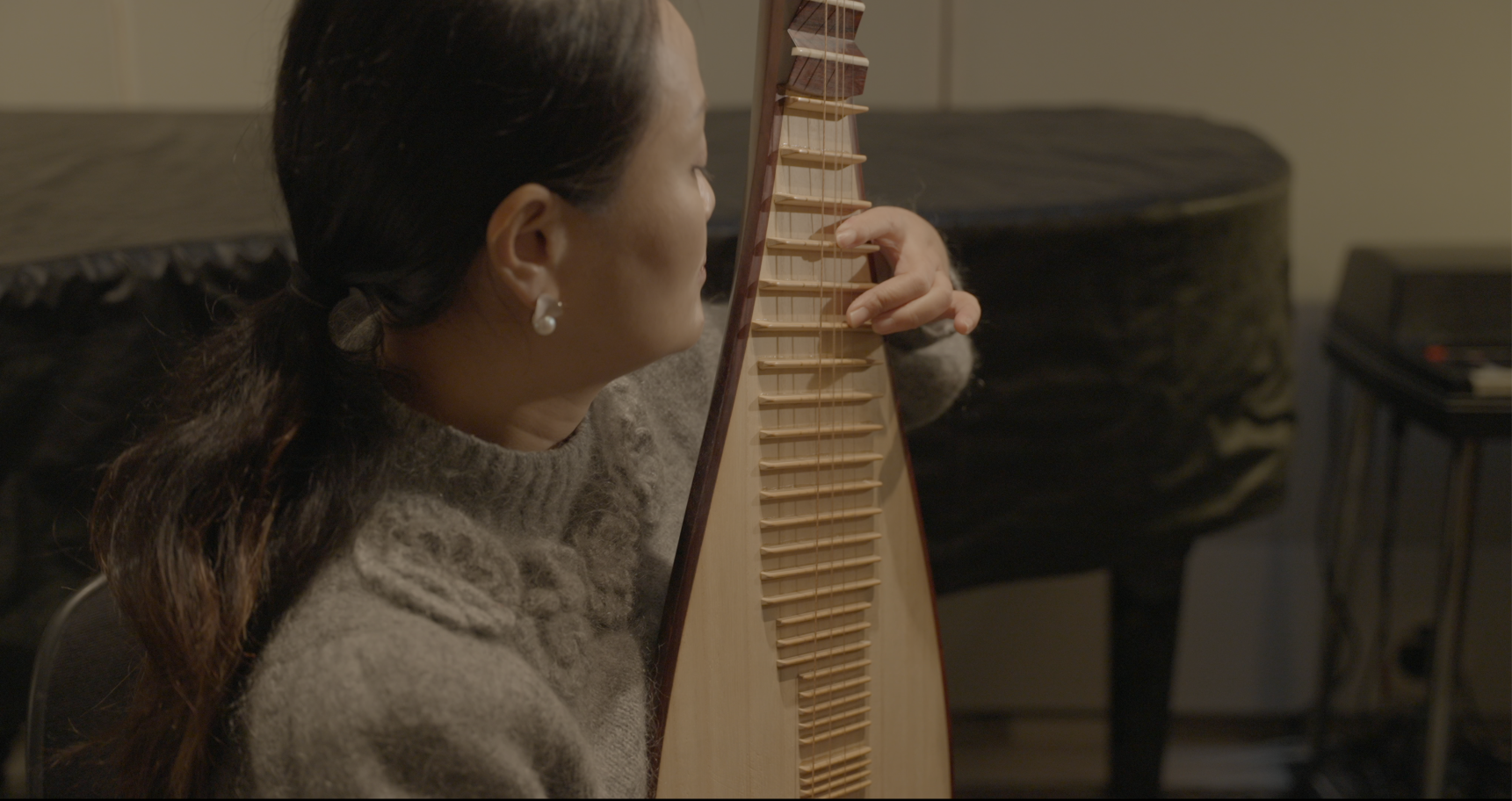
The stylistic knowledge from each musician was not only for their performance within their cultural repertoire, but also for interpreting themes from the main cinematic score of the game. That way, we wanted to create a strong cohesiveness and connection between the different parts of the soundtrack. The musical themes and motifs written for the main score often had intervals and rhythms that carry well across cultures and instruments, to the benefit of soloist interpretation across many different instruments. It’s very fascinating listening to the similarities in musicality across history and the world, in that certain rhythms and tonal patterns seem more inherent to us as humans and the physical reality of sound. This serves our purposes very well in this case.
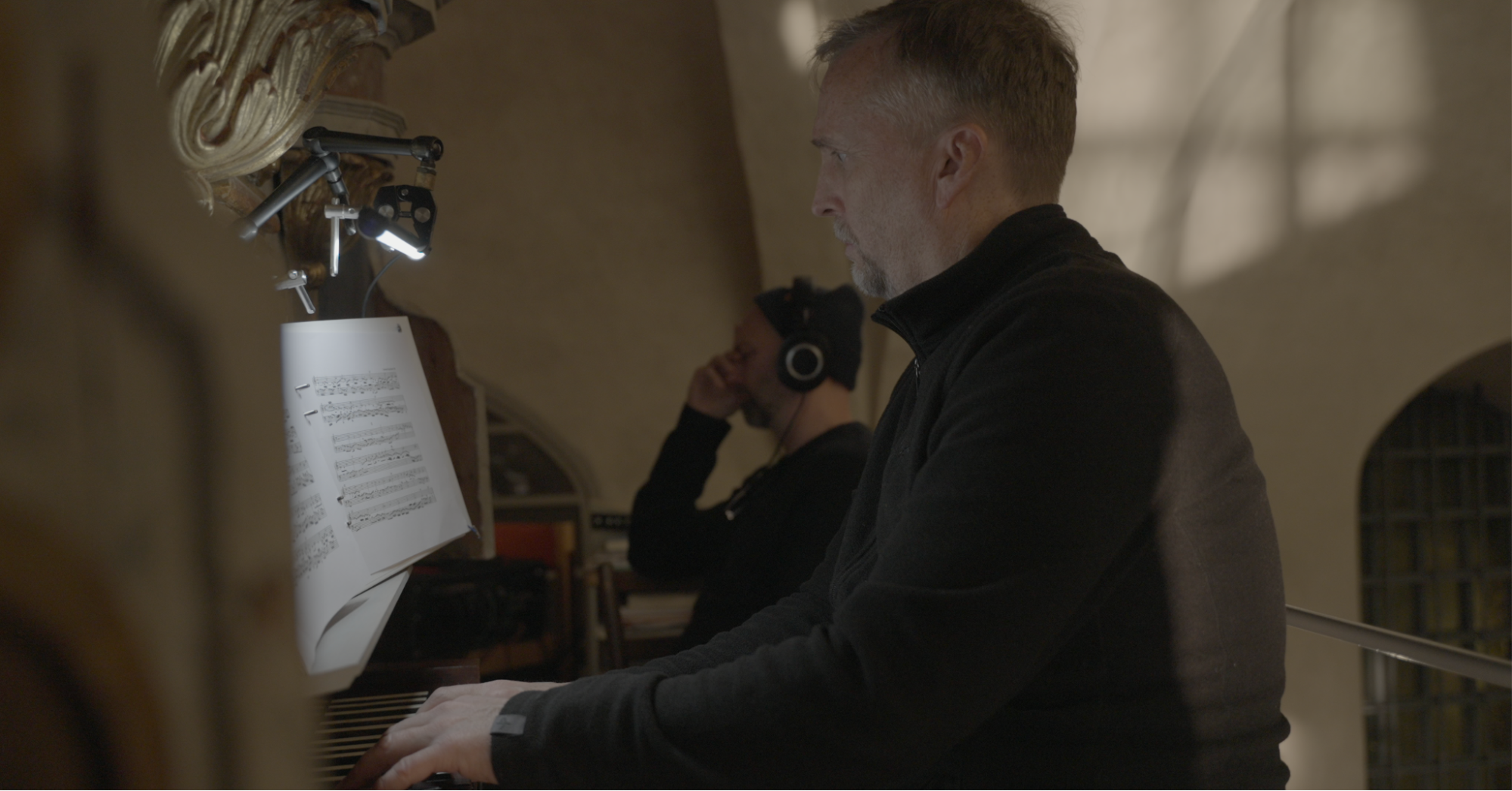
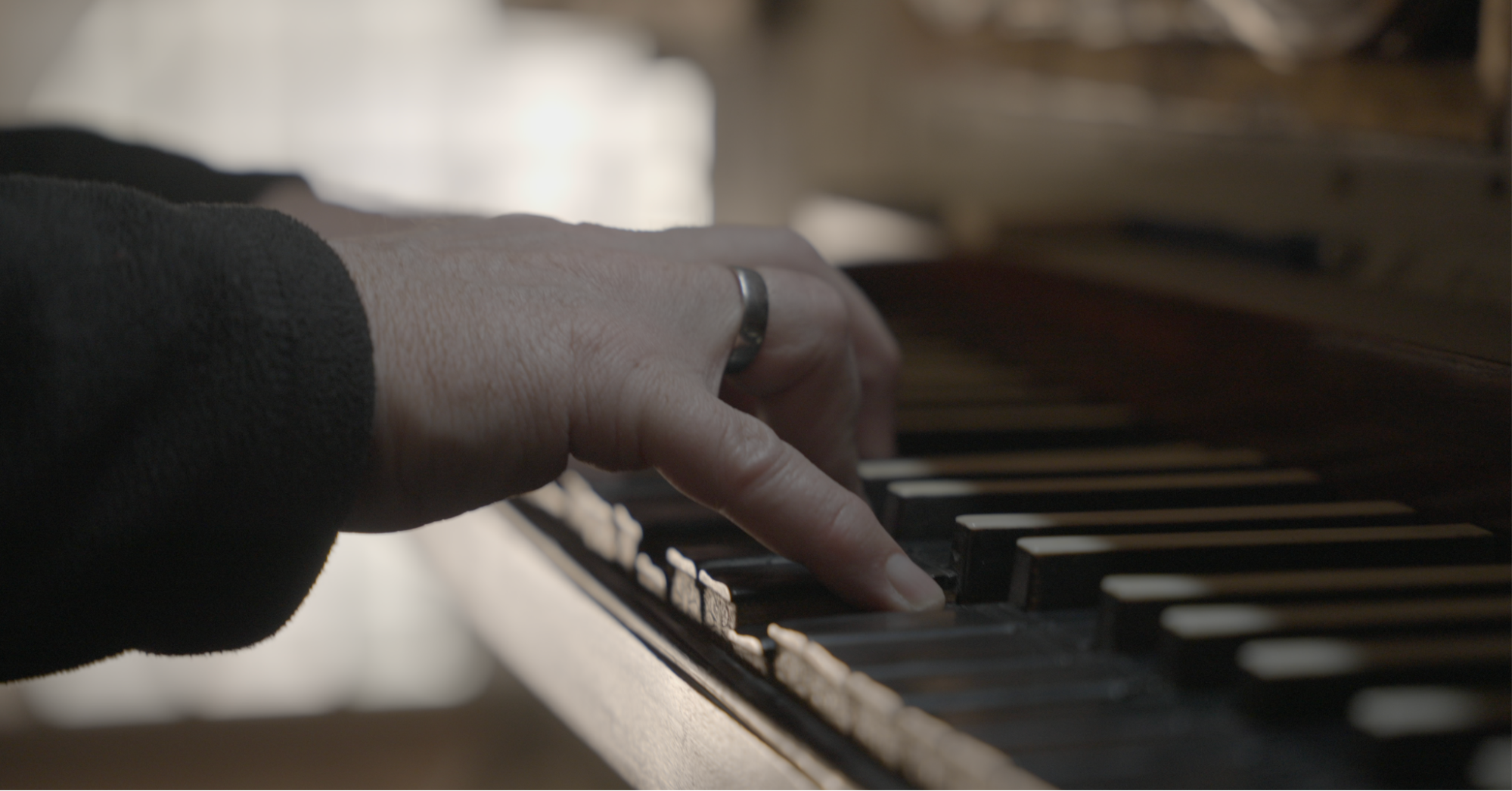
Another important factor for us was to record real world instruments handled by real world people. Music in recorded form is a very recent invention, as well as amplified musical instruments and microphones. Music historically has typically been performed by a person right in front of you, in the same room as you. We wanted to capture that very tangibly physical aspect of music by also recording our musicians handling their instruments, picking them up, tuning them, muting the strings after a performance, adjusting the setup of the instrument, and so on. We weave these actions in between their recorded tracks during a play session, in a way that those actions would happen if one was attending a performance of that instrument in real life.
We also adapt the reverb of the cultural soloist instruments to the space the player as a spectator or entity in the game is currently in. If you’re looking at the map over a forest in the game, the soloist will sound as if they’re playing in a forest. If you are interacting with a menu with an illustration of a church interior, the musician will sound as if they’re there with you in that space. For this purpose, we recorded instruments as neutrally and “dry” as possible, and then situate them in context, live during gameplay, using convolution reverb in our audio middle-ware. Convolution reverb is a technique using impulse response recordings from real life spaces as a resonating room for digital audio, lending it well to games and interactive media.
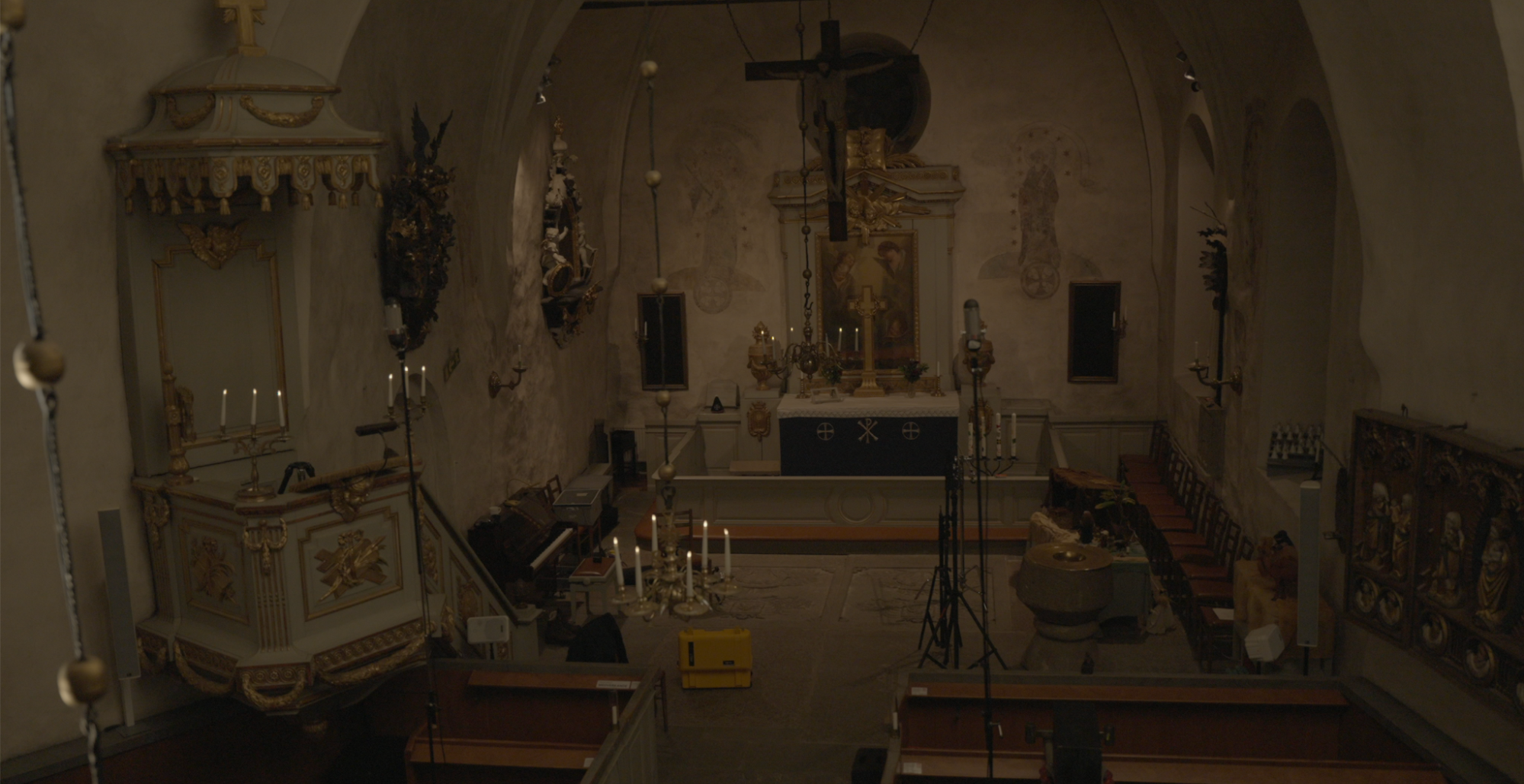
We set up another meter, simply counting the time a player has been listening to cultural tracks, and set a threshold after which the music system will kick back to the cinematic score. Soloist tracks will exit at their earliest “musical convenience”, typically on ending the next phrase or in the next break in the music. The cinematic score will then come in, at the intensity level corresponding to the current intensity meter level (the player action-driven meter, if you remember). In addition, soloist tracks will go from sounding “somewhere out of focus a bit further away” to “right in front of me” as player intensity goes up, and eventually shift over to a cinematic track if player activity is high enough.
So cinematic score will typically play during more intentful/player action driven game segments, or if it hasn’t played for a while, and cultural soloists will be heard during more low-intensity segments of gameplay. We tried scaling cinematic score pieces down to as few instruments as possible, or even singular instruments, during the lowest intensities to better align them in expression with the cultural soloists. Of course, some cinematic tracks are themselves soloist tracks, and by definition those are harder to scale or cannot be scaled at all in a meaningful way. Every decision made as to how the music should behave dynamically has had to take into account the nature and structure of each piece of music, so no two cinematic tracks will react exactly the same to player input.
The music in EU5 has been the biggest focus of the Paradox audio team working with the game, as well as the composer Håkan Glänte, and all the soloists, orchestras, music producers, ethnomusicologists, and music historians involved in its creation. We are all very proud of the result, and really hope our players will enjoy experiencing this phase in the music history of Paradox games.
Lastly, thank you for reading! We’re looking forward to showing you more of what goes into making audio come alive for our games in the future!
You can check out our full EU5 OST available now on Spotify, Apple Music and other service providers, or on YouTube here:
And remember to wishlist Europa Universalis V!
I’m Mattias Wennlund and I’m the audio director for Europa Universalis V, formerly known as Project Caesar. I’d like to give some insight on what has been, and is, the music direction and implementation system in EU5.
Comparatively speaking, I’m new to Paradox and the Tinto dev team. I came on the project in early 2023, when the process of music production had already been rolling for quite some time.
The original premise of the music direction, at the time the writing process started (so well before my time), was to compose music encompassing all historical eras the game takes place in, as well as all religious and folk music traditions present during those years. A behemoth of a task, as you can imagine. That thread was something I tried to spin further, to see how we could achieve that goal within a foreseeable time, but also how to more clearly anchor it in the rich heritage of previous generations of Paradox games all while taking a step forward in terms of what we can provide for our players. After many discussions both within the Paradox Audio department, with our composer for EU5 Håkan Glänte, as well as with the Tinto leads, a few patterns emerged. We wanted EU5 to have:
- dynamic and adaptive music
- tangible cultural and historical authenticity in its music
- an emotive and cinematic main score

Håkan Glänte, the composer of the cinematic part of the soundtrack, conducting the orchestral recording sessions
Looking back at previous EU games, it seems immediately obvious that a low-hanging fruit in terms of direction for a new composer would be “If in doubt, go epic”. It’s also clear that the last titles have been veering towards a more orchestral and cinematic score referencing a classical or baroque/renaissance style of composition. But if we go back even further, to EU2, we also have examples of what is commonly called “public domain” music, meaning authentic music written a long time ago, or oral traditions of folk music carried across generations by being learned from musician to musician.
How then do we incorporate all of that heritage, and new direction, into the soundtrack for EU5?

Early draft of music system design graph
Dynamic cinematic score as backbone
Listening back to the ample collection of music written for the EU series of games, it’s clear that an orchestral and cinematic score has been the backbone. Luckily for us, the main composer for EU5, Håkan Glänte, is a masterful composer in that regard. There was already over an hour of music written for the game when I came onboard, including the second overture, which is an exposition of the musical themes spanning the rest of the soundtrack. Our job from that point on was to expand and adapt that score to a new direction, nudging it towards new grounds without losing the strong foundation.As a quick test we broke up some of the compositions in stems, each one representing a group of instruments or a solo instrument, and started experimenting with scaling the composition up or down based on a single parameter (using our audio middle-ware Wwise and its built-in dynamic music tools). Was it possible to create a dynamic arrangement without sacrificing the core composition style and arc of Håkan’s work and traditional techniques? The experiment proved successful, and we decided to keep working in that direction, continuously updating the dynamic arrangements as bare-bones demos turned into digital symphony orchestras that then eventually turned into real-life recordings of instruments.

The brass section of Norrköpings Symphony Orchestra, who recorded the orchestra parts of the cinematic soundtrack
The benefit of using the tools in Wwise was that we can adapt single stems playing intensity using filters and volume, but also set up transition rules for exactly when they are allowed to come in or go out. Aligned with beats, bars, phrases or custom points in time, we tried to make sure all instruments coming and going felt as natural as possible.
Sometimes this was easy- for instance, having a drum come in on the next bar very often works seamlessly. But sometimes it was harder, for instance when dealing with a pronounced vocal soloist track in a slower or more free form tempo. It was important to us not to use the same rules for every stem, to avoid music “kicking in,” but rather ebbing and flowing as if a conductor is directing the musicians in real time.
The next question was what to base that single parameter driving the music intensity on. Our players enjoy our games for very different reasons, and their play sessions can look very different. In a GSG, one player might be spending their time adjusting tax percentages, one will be exploring the world, and another might be directing their armies in war. We realized we needed a single way of encapsulating all of those varied forms of “enacted intent” to make the score react in meaningful ways to each player's specific play style.
We categorized different actions according to their weight or importance, scaling all the way from clicking any single button regardless of its function to declaring a war, and gave them a value on a scale. For each of those actions, we fill up a meter in Wwise that then slowly trickles back down if the player is inactive. This way, any “high intent period of play” will generate an increase on that meter, even if it’s only about intensely looking through the UI for your next move. It also gave us big flexibility in how fast we allow that meter to go up or down, meaning we can balance the ebb and flow of the music in a single place. In addition, we separated the written score into one group of tracks more suitable for peace time, and one group of tracks more suitable for war time.
Another important factor for us was to allow the soundtrack, and each play session, to breathe in terms of sequencing of music. We’ve set up tracks to have a random, but not insignificant, period of silence between them (with some systemic exceptions), both to avoid listener fatigue, but also to let the ambient sounds of the game world come into focus.
A very conscious effort was made to stay true to the rich musical heritage of previous EU games by letting the musical themes be influenced by older soundtracks and fan favourites. Sometimes as inspiration, sometimes as clear references, and sometimes as a direct interpretation of materials from many different sources in earlier soundtracks. There is something distinctly “Europa Universalis” to be treasured and captured, and that aspect needs to be there for the soundtrack to feel right. This very literal approach served very well as a springboard for Håkan's writing process into his own new territory, and as an anchor to help us stay true to the tone of previous games.
Tangible authenticity and cultural historical knowledge and tradition
After determining we needed an orchestral cinematic score in a classical vein, our next conundrum was how to incorporate a strong historical authenticity in the soundtrack of the game. If you remember, the original intent was to capture all cultures and religions spanning the eras and geographical regions we play in the game. One way to tackle this could have been to task a composer with writing in a great many styles, trying to include all of these aspects somehow. When discussing this, we quickly realized that any single person cannot possibly be an expert in such a wide variety of styles and traditions. We also concluded that in our collective net of contacts, we know of many instrumentalists who specialize in very specific eras and styles, and have a deep understanding and very grounded repertoire within those traditions.It dawned on us that there was a synergy to be had here, with both getting help from people much more knowledgeable than us within their tradition, and also sourcing actual, authentic pieces of music performed in a style that was present in that place and time. We couldn’t think of a way to have a more authentic representation of any art represented in our games than that, to have the music sound as it would sound to a person at that place and time in history.

Feras Charestan playing a qanun, a traditional middle eastern instrument, plucked and strummed, with a distinct resonating characteristic sound
We reached out to partners we knew would be able to expand on our own contacts, specifically into regions of the world where we for geographical reasons have less knowledge and acquaintances. We wanted to find, where possible, performers currently active within a certain culture's musical tradition and performance. Secondly, when not possible because of lack of written records or long-gone civilizations, performers who could present the most plausible representation of what historical evidence suggests could be what that music sounded like. It goes without saying that we also looked for performers and musicians masterful in their respective crafts. Additionally, where applicable, our contacts consulted ethnomusicologists and musical historians to validate our processes and source material.

Ying Ying playing a Chinese pipa, a plucked string instrument traditionally performed in a very evocative literal style
The stylistic knowledge from each musician was not only for their performance within their cultural repertoire, but also for interpreting themes from the main cinematic score of the game. That way, we wanted to create a strong cohesiveness and connection between the different parts of the soundtrack. The musical themes and motifs written for the main score often had intervals and rhythms that carry well across cultures and instruments, to the benefit of soloist interpretation across many different instruments. It’s very fascinating listening to the similarities in musicality across history and the world, in that certain rhythms and tonal patterns seem more inherent to us as humans and the physical reality of sound. This serves our purposes very well in this case.

Martin Östegren playing the Fresta church organ, originally built in 1698

Closeup of the organ manual
Another important factor for us was to record real world instruments handled by real world people. Music in recorded form is a very recent invention, as well as amplified musical instruments and microphones. Music historically has typically been performed by a person right in front of you, in the same room as you. We wanted to capture that very tangibly physical aspect of music by also recording our musicians handling their instruments, picking them up, tuning them, muting the strings after a performance, adjusting the setup of the instrument, and so on. We weave these actions in between their recorded tracks during a play session, in a way that those actions would happen if one was attending a performance of that instrument in real life.
We also adapt the reverb of the cultural soloist instruments to the space the player as a spectator or entity in the game is currently in. If you’re looking at the map over a forest in the game, the soloist will sound as if they’re playing in a forest. If you are interacting with a menu with an illustration of a church interior, the musician will sound as if they’re there with you in that space. For this purpose, we recorded instruments as neutrally and “dry” as possible, and then situate them in context, live during gameplay, using convolution reverb in our audio middle-ware. Convolution reverb is a technique using impulse response recordings from real life spaces as a resonating room for digital audio, lending it well to games and interactive media.

Microphones set up in Fresta church
We recorded seven different cultural musical archetypes, roughly corresponding to Europe, Africa, Middle East, India, East Asia, North America, and South America. We opted to drill deep instead of wide, picking single defined cultures as opposed to trying to capture a broader geographical area, in order to really hone in on the specific style represented.
Tying it all together
How, then, should the music system allow the cultural music to come in and out? Well, first of all, each culture's music is tied to the country each player chooses for their play session. Secondly, we wanted a reasonable mix of soloist tracks and main cinematic score, so any player doesn’t get stuck hearing only one part of the soundtrack.We set up another meter, simply counting the time a player has been listening to cultural tracks, and set a threshold after which the music system will kick back to the cinematic score. Soloist tracks will exit at their earliest “musical convenience”, typically on ending the next phrase or in the next break in the music. The cinematic score will then come in, at the intensity level corresponding to the current intensity meter level (the player action-driven meter, if you remember). In addition, soloist tracks will go from sounding “somewhere out of focus a bit further away” to “right in front of me” as player intensity goes up, and eventually shift over to a cinematic track if player activity is high enough.
So cinematic score will typically play during more intentful/player action driven game segments, or if it hasn’t played for a while, and cultural soloists will be heard during more low-intensity segments of gameplay. We tried scaling cinematic score pieces down to as few instruments as possible, or even singular instruments, during the lowest intensities to better align them in expression with the cultural soloists. Of course, some cinematic tracks are themselves soloist tracks, and by definition those are harder to scale or cannot be scaled at all in a meaningful way. Every decision made as to how the music should behave dynamically has had to take into account the nature and structure of each piece of music, so no two cinematic tracks will react exactly the same to player input.
The music in EU5 has been the biggest focus of the Paradox audio team working with the game, as well as the composer Håkan Glänte, and all the soloists, orchestras, music producers, ethnomusicologists, and music historians involved in its creation. We are all very proud of the result, and really hope our players will enjoy experiencing this phase in the music history of Paradox games.
Lastly, thank you for reading! We’re looking forward to showing you more of what goes into making audio come alive for our games in the future!
You can check out our full EU5 OST available now on Spotify, Apple Music and other service providers, or on YouTube here:
And remember to wishlist Europa Universalis V!



